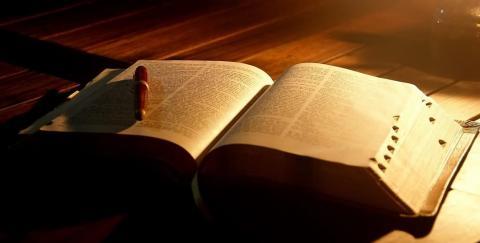The Passover Seder

March 1, 2022
Now on the first day of the Feast of Unleavened Bread the disciples came to Jesus, saying to Him, "Where do You want us to prepare for You to eat the Passover?" (Matthew 26:17)
As Jesus and the disciples moved closer to the Passover festival and the time of His crucifixion, there were preparations that had to be made. The Passover lamb had already been selected by the families who gathered in Jerusalem for the celebration. The lamb would be killed by a priest at the Temple between 3:00 pm - 5:00 pm. The families also had to buy unleavened bread, wine, bitter herbs, and the sauce all used in the Passover meal (Seder). Each element in the meal symbolized an aspect of the Jews exodus from Egypt centuries earlier.
The lambs slaughtered and blood sprinkled on the altar reminded the people of the painting of the doorposts of the houses in Goshen with the lamb’s blood the night the Death Angel passed through Egypt. After the Passover lamb was killed and its blood sprinkled on the altar, the family took the carcass, roasted it whole in the fire, and ate it with the other elements of the Seder meal. Anything left over was to be burned completely (Exodus 12:8-10). The four cups of wine symbolized the promises of God to the Jews prior to leaving Egypt: (1) I will bring you out from under the burdens of Egypt, (2) I will deliver you from bondage, (3) I will redeem you with an outstretched arm and great judgments, (4) I will take you to be My people and I will be your God (Exodus 6:6-7). The bowl into which the unleavened bread and bitter herbs were dipped contained charoseth, a mixture of ground apples, dates, pomegranates, and nuts (almonds). It was a thick, brown paste that symbolized the mud bricks their ancestors had to make to build the Egyptian treasure cities. Cinnamon sticks symbolized the straw used in the brick making process. Dipping the bitter herbs into the charoseth symbolized the bitterness of their slavery and the sweetness of their deliverance.
By Thursday morning the disciples had bought all of the elements of the Seder. The only remaining issue was a room in which to celebrate the Passover. Josephus tells us there were about 2 million people gathered in Jerusalem for the celebration in the days of Jesus, so rooms were scarce. But Jesus had already arranged for a room for them to occupy.
All of the Holy Days and Feasts decreed by God in the Old Testament were instituted to commemorate the saving work of Jesus Christ. The Passover is a prime example. He was the Passover lamb, whose blood was shed to shield us from God’s judgment of death. Only those who believed the Word of God through Moses and placed themselves under the blood of the lamb were saved from His judgment of death. Those who believe the Word of God and trust in Jesus Christ, the Lamb of God, are saved from His judgment of eternal death in hell. The bitter herbs point to the bitterness of sin that Jesus saves us from. The charoseth reflects the sweetness of God’s love, grace, and mercy shown toward us in that while we were dead in our trespasses and sins, Christ died for us (Romans 5:8). The wine represents His blood that was shed for us. The unleavened bread represents His body that was broken for us on the cross. The cinnamon represents the spices used to prepare His body for burial. “Jesus paid it all, all to Him I owe. Sin had left a crimson stain - He washed it white as snow.” Amen.
Pastor
